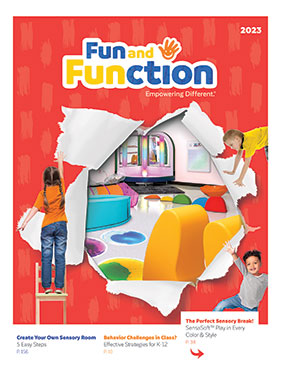A kindergarten teacher recently commented that going back to school after a long summer is like "birthing a baby." I heard another teacher explain that a new kindergartener is not really a kindergartener but a 4-year-old with PPSD (post partum summer disorder). I know both these teachers and they love teaching young children so I asked what their strategies are for transitioning children from summer to school. The teachers shared a few tips to ensure security, safety and great classroom behavior. And, these work well for older students too.
Voice Modulation
The first thing students must learn as they enter a classroom is how to modulate their voices. Establishing five levels of voice with visual cues can really help children learn to understand voice control: 0-No Talking 1- whispering 2- small group talk 3- normal voice 4- presentations 5-outside voice. Having a visual chart on a wall is a great idea here so you can point to the level necessary at the time.
Focus on the Positive
A teacher once shared this high-impact classroom technique. Her original approach was to send home suggestions, comments and assignments to help with weak spots. Then one day she decided to focus on the positive. She used this technique in the classroom as well as with comments sent home on assignments. She said not only did it change her classroom atmosphere, but also she noticed a steady increase in performance in multiple areas. And she was enjoying the art of teaching at a whole new level. Try finding the positive in each student and build upon it bit by bit.Encourage Movement
Behavior can often be directly correlated by movement. The more we move, the better we feel. Movement acts as a filter for integrating our environment and sensory information. Having a movement corner, movement at the desk, movement breaks and sufficient recess can greatly enhance positive behavior.Create a Safe Place
Be sure that your classroom is a safe place. That means rules are clearly defined, everyone is treated respectfully and communication is encouraged. Classrooms that promote emotional safety and respect are known to have better-behaved students. Substitute teachers can tell you that those are the classrooms they long to work in.Be Sensory Savvy
Is your classroom sensory savvy? A classroom that provides room to wiggle, move, stretch, rock, jump, explore and touch will offset many irregular behaviors before they occur. Pillows for reading or floor work, wiggle cushions for desk work, visual timers, weighted lap pads, rocking boards and fidget tools can allow your students to move and explore without disruption to your curriculum. Need a break? Take a pass to the sensory corner. Need to move? Get a pass to the movement corner. You can set up your sensory sensitive classroom any way that works for you and your students – including Break Boxes. Let us know how we can help!Remember that behavior is a learned skill and only comes through a well-tuned, secure sensory-emotional system. Though school is only one part of a day, it can be integral to a student's behavioral development and overall well-being.
Do you have any creative tips for starting the school year? We love to hear your ideas! Share with us at social@funandfunction.com or on our social media pages!






















Comments